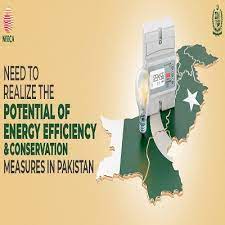Introduction
The demand for energy continues to rise, placing strain on our finite resources and contributing to environmental concerns such as climate change. As a result, governments and businesses have recognized the urgent need to improve energy efficiency.
Government Initiatives for Energy Efficiency
Governments worldwide have taken various measures to drive energy efficiency:
Regulatory Frameworks
Government regulations, such as energy consumption standards for appliances and vehicles, have compelled businesses and individuals to adopt more energy-efficient options.
Incentive Programs
Governments offer incentives like tax breaks and subsidies to encourage the adoption of energy-efficient technologies and practices, making it economically advantageous for businesses to invest in greener solutions.
Research and Development Funding
Governments allocate funds to research institutions and businesses working on energy-efficient technologies. This funding accelerates innovation and the development of sustainable alternatives.
The Role of Businesses in Energy Efficiency
Businesses also contribute significantly to energy efficiency:
Sustainable Operations
Companies are integrating eco-friendly practices into their operations, from sourcing renewable energy to adopting energy-efficient lighting and HVAC systems.
Innovation and Technology
Businesses are investing in research to develop innovative energy-efficient technologies that can reduce their environmental footprint while enhancing profitability.
Supply Chain Optimization
Optimizing supply chains reduces energy waste during production and distribution, showcasing how businesses can drive efficiency beyond their immediate operations.
Collaboration Between Government and Businesses
Collaboration between these two entities is crucial for effective change:
Public-Private Partnerships
Government-business partnerships leverage resources and expertise to implement large-scale energy efficiency projects that benefit both the economy and the environment.
Policy Advocacy by Businesses
Enterprises advocate for policies that incentivize energy-efficient practices, using their influence to shape regulations and support sustainable initiatives.
Case Studies of Successful Collaborations
Examples like city-wide energy efficiency projects and collaborative research ventures highlight the positive impact of joint efforts.
Challenges and Opportunities
Despite progress, challenges persist:
Balancing Profit and Sustainability
Businesses must navigate the delicate balance between profitability and sustainable practices, often requiring upfront investments for long-term gains.
Overcoming Barriers to Implementation
Government regulations can face resistance, and businesses must overcome technological and financial barriers to implement energy-efficient solutions.
Future Trends in Energy Efficiency
Several trends are shaping the future of energy efficiency:
Smart Cities and Infrastructure
Advanced technologies enable interconnected urban systems that optimize energy consumption, waste management, and transportation.
Decentralized Energy Systems
Localized renewable energy sources reduce transmission losses and make communities more resilient to disruptions.
Circular Economy Practices
Business models are shifting towards circularity, promoting product reuse, recycling, and reduced waste.
Conclusion
The collaboration between government and businesses holds the key to achieving significant advancements in energy efficiency. By combining regulatory frameworks, innovation, and sustainable practices, we can create a world where energy consumption aligns with environmental stewardship.


